Amidst red carpet grandeur and large pictures of fossil fuel plants spewing pollution, Elon Musk, the founder of Tesla Motors, unveiled the Tesla Powerwall in early May.
Almost immediately, my phone was inundated with emails touting words such as “game changer,” “new era,” and my personal favorite, “utility demise.”
What is the Powerwall? It is a very stylish, wall-mountable lithium ion battery that is approximately 51 inches tall by 34 inches wide by 7 inches thick. Musk announced a sale price of $3500 for a 10 kilowatt hour (kWh) unit that will have a 2 kW to 3.3 kW peak. The unit will weigh about 220 pounds and as many as nine of these cutting edge batteries can be stacked together.
What does all this technical jargon mean to you, the average homeowner? It means one Powerwall battery at 100 percent efficiency is enough to run your home for 5 hours. Nothing is 100 percent efficient so the average homeowner is more likely to see a 3 to 4 hour run time.
At $3,500 and assuming 1,000 full-charge cycles over the life of the battery, the per kWh math is very simple. It is the equivalent of buying your electricity back from the battery at a 35 cents per kWh.
Today, the average Cherryland residential account is paying about 13-15 cents per kWh with the availability charge and monthly power cost adjustments included.
Now, we must remember the fact that $3,500 just gets you a battery. It doesn’t get you installation or an inverter to convert the battery’s DC electricity to AC. This could drive your total cost into a range of $6,000 to $7000. Thus, the per kWh price spikes to 60 – 70 cents per kWh.
How do you charge the battery? This part is easy. You can charge it from your regular electric grid or you can install wind or solar panels that directly charge the unit.
The addition of wind or solar will add yet another layer to the price. The number of panels or size of wind tower would be determined by how fast you want to recharge the battery. I will leave that calculation up to each reader.
What if you already have wind or solar on your home? I guess you could avoid one cost component. However, the renewable energy used to charge the battery might then need to be replaced with grid energy.
Is there a win-win partnership between such a battery and the utility? I believe one day that there just might be such a partnership. As the price of this technology drops, the day could come when the utility gives a low rate during off peak times for charging the battery.
Then, in times of high demand, the utility could shut off the home for a few hours to save on expensive peak energy prices. Talk to me when the battery cost drops to $1,000, the efficiency doubles, or some combination of both.
Globally, the energy storage industry is growing rapidly. Yes, I consider this a good thing. It will hasten improvements and encourage further development of other storage technologies.
So, I do believe the Powerwall to be a game changer but I also don’t see the demise of the utility anywhere in my lifetime.



Thanks Tony. It’s electronics/finances 101. Rick
It will be exciting when the cost of batteries like these decrease in cost by a factor of ten and increase in efficiency also.
Just like all technologies before it; computers, computer storage, cell phones, HD TVs, and so on and so on.
Great article Tony. I can certainly see business application for this product when it comes to technology. Many businesses buy individual battery back up systems for each computer. After all, a brown out is a much more common strain on electronics than a surge. Perhaps in the near future we will see more small businesses looking to products like this for centralized battery backups to protect communication and computer systems.
Thanks Tony – It’s nice to see your common sense approach. People don’t remember that you have to put power into it to get it back out. Thus the biggest issue with electric cars. We have to produce electricity to run “clean” energy products like cars and battery backups.
I do believe that there is a cost to dispose of the used batteries and an affect on the environment also.
Great common sense article power storage utilization! I believe Tesla motors should do what other electric vehicle manufacturers proposing the option of their vehicle battery packs for storage with exportable power inverter/chargers for standby power at peak demand and or during power failures.